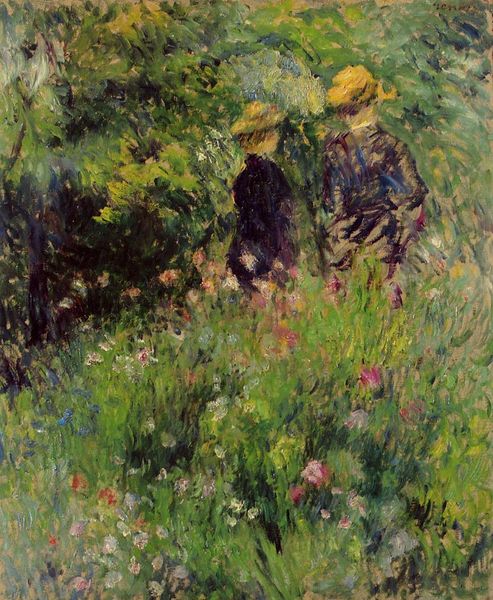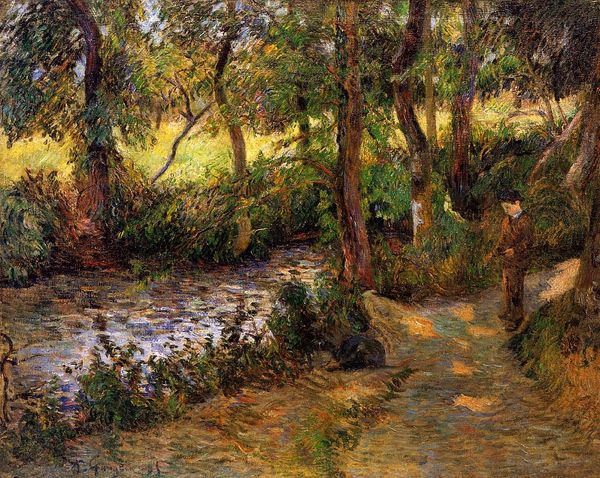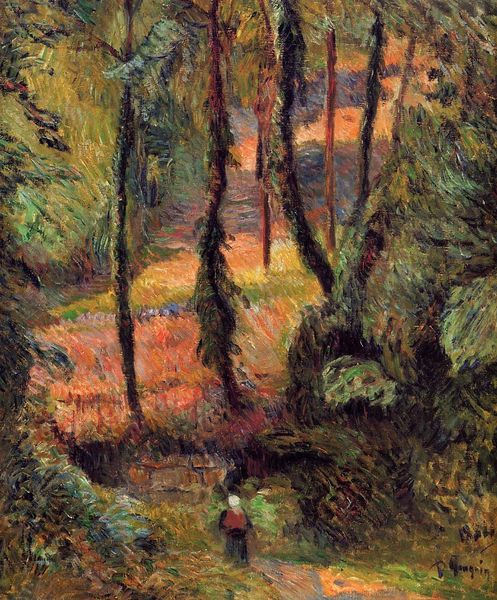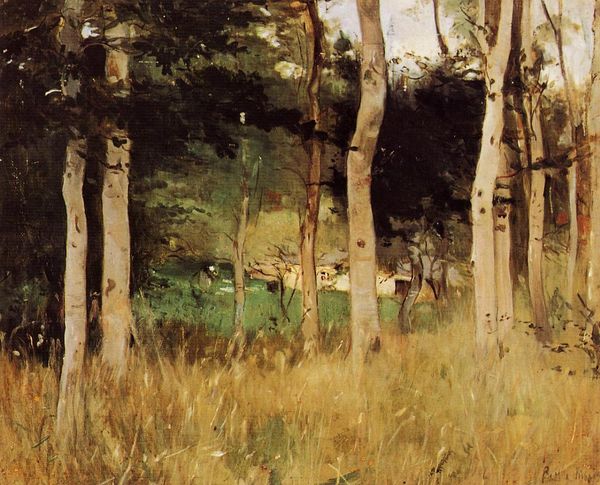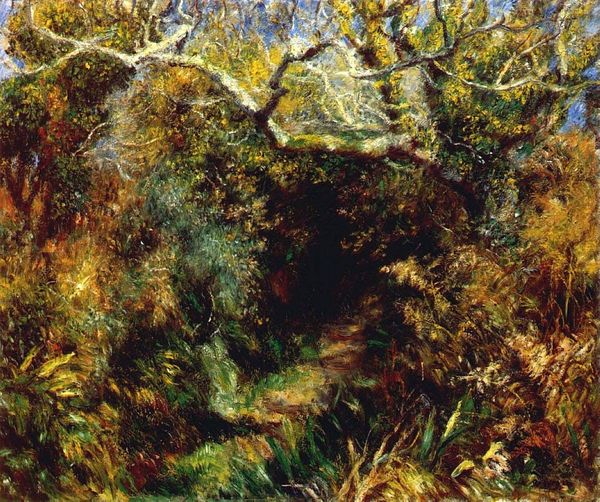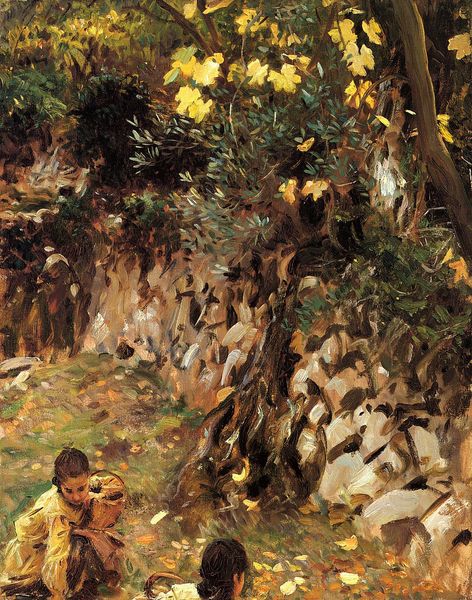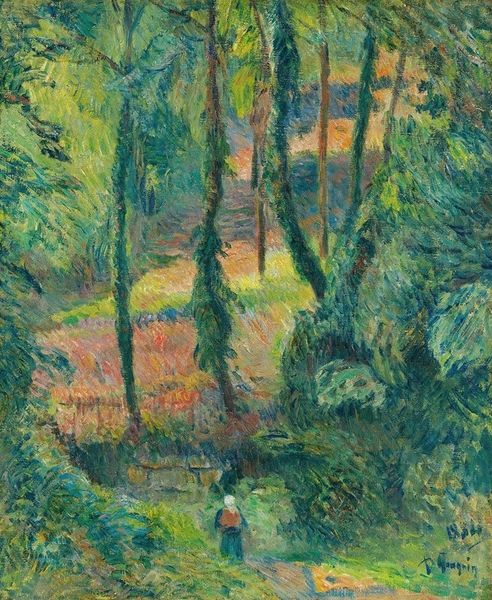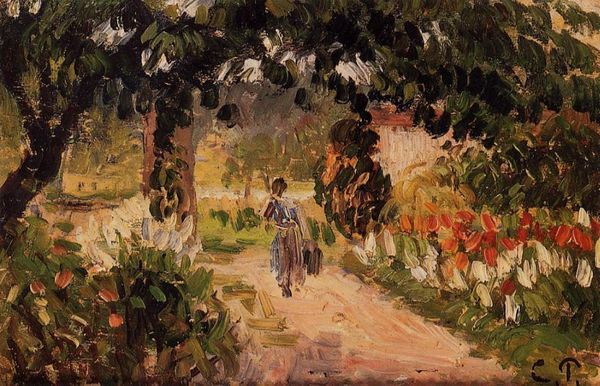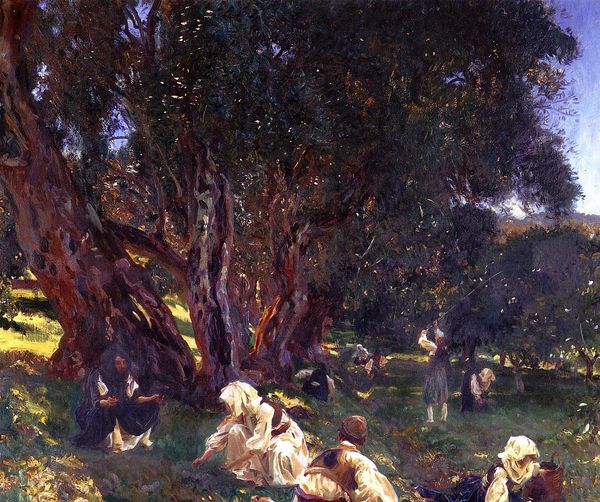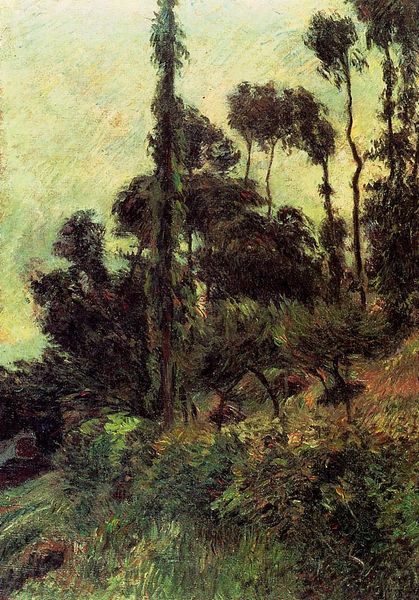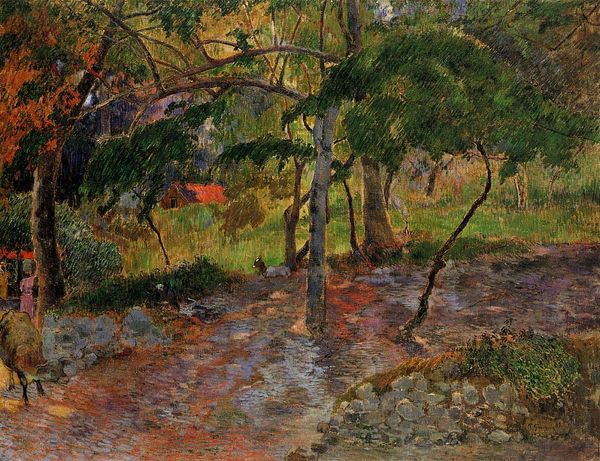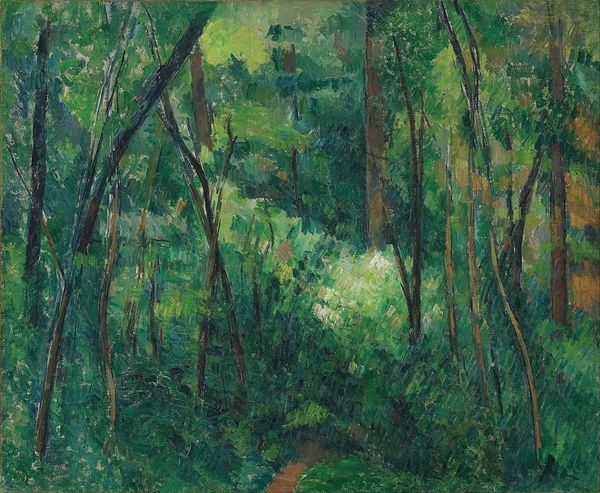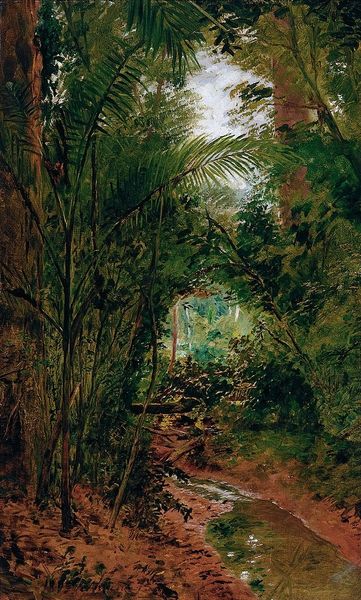
Copyright: Public domain
Curator: Let’s discuss Anders Zorn’s “A Woman in a Forest,” an oil painting from 1907. Editor: Its initial impact is strikingly tranquil. The composition pulls the eye into the cool, shaded depths of the woods. Curator: The piece clearly demonstrates Zorn’s adoption of plein-air techniques characteristic of Impressionism. Notice the way light filters through the canopy, fracturing into dapples on the forest floor. It’s a study in capturing transient atmospheric effects. Editor: Absolutely. I am drawn to the density of the materials—the lush layering of oil paint evokes the very tangible sensation of pushing through foliage, the feeling of cool earth underfoot. Did he prepare his own paints, do you think? I would be curious to analyze the pigment composition... Curator: While pigment analysis could reveal Zorn’s choices, I’m more focused on how those choices manifest in pictorial space. The figure is almost subsumed by the landscape, isn’t she? Deliberately positioned to draw the viewer into contemplating the relationship between humanity and nature. Editor: That positioning intrigues me. It begs the question of labor – is she foraging? Gathering materials? The artist presents labor in the landscape as dignified, integrated into the rhythm of the natural world. Curator: An intriguing perspective. The ambiguity of her activity allows the viewer to project their own narrative, though it risks obscuring formal aspects of design. It serves to direct the composition, reinforcing our sense of scale and orientation, like a triangulation point... Editor: And that location speaks volumes. The artist chose a humble forest setting, rather than manicured gardens or constructed landscapes, making a case for the beauty of natural, untouched places... Perhaps also drawing attention to our dependence on its materials. Curator: Agreed; and the layering and density that you pointed out create a unique impressionistic texture, a depth created through materiality and skillful brushwork alone. The canvas serves to transform the observed world, inviting reflection on form and perspective, its use of depth, line, and the color palette Zorn employs. Editor: Exactly. In the end, for me it all comes back to the lived experience embedded in the materials themselves, a reminder of our entangled existence. Curator: I see the work as evidence that structure underpins experience. We might never fully reconcile our differing approaches... Editor: ...but we’re both invited into this space together, prompted to engage with the work on equal footing.
Comments
No comments
Be the first to comment and join the conversation on the ultimate creative platform.
